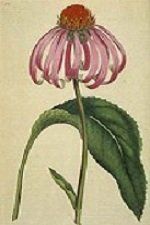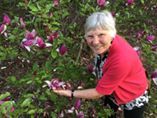How to grow blueberries
- By Marijke Niles
- •
- 16 Apr, 2017
- •
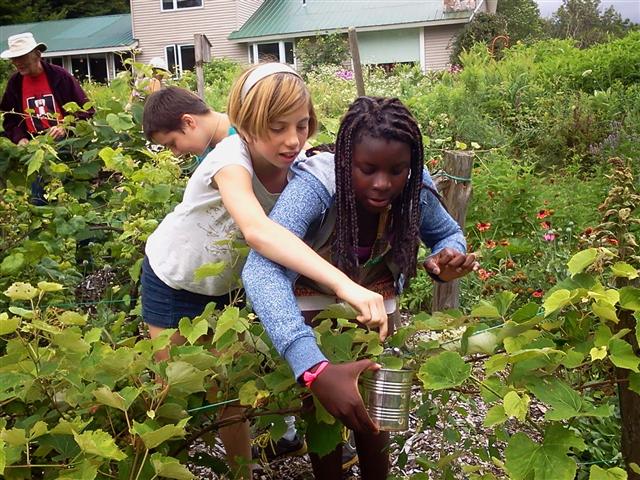
- Acidic soil (pH of 4 - 5)
- Soil rich in organic matter
- Well-draining but moist soil
- Full sun ( tolerate part shade)
- Deep watering for their shallow roots so the water can rise to the surface.
- 3-4 inches of mulch such as aged wood chips to keep the roots cool and moist.
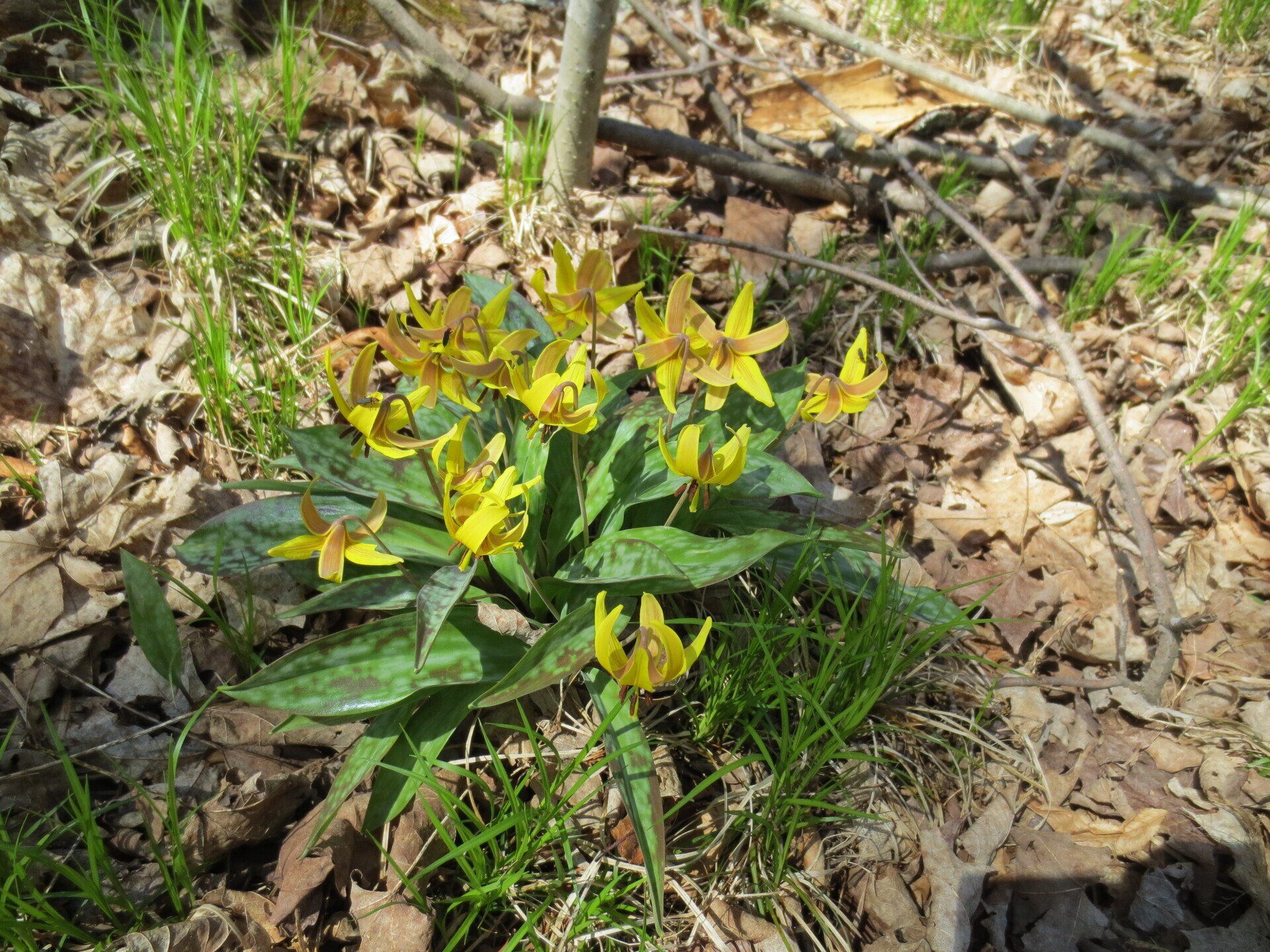

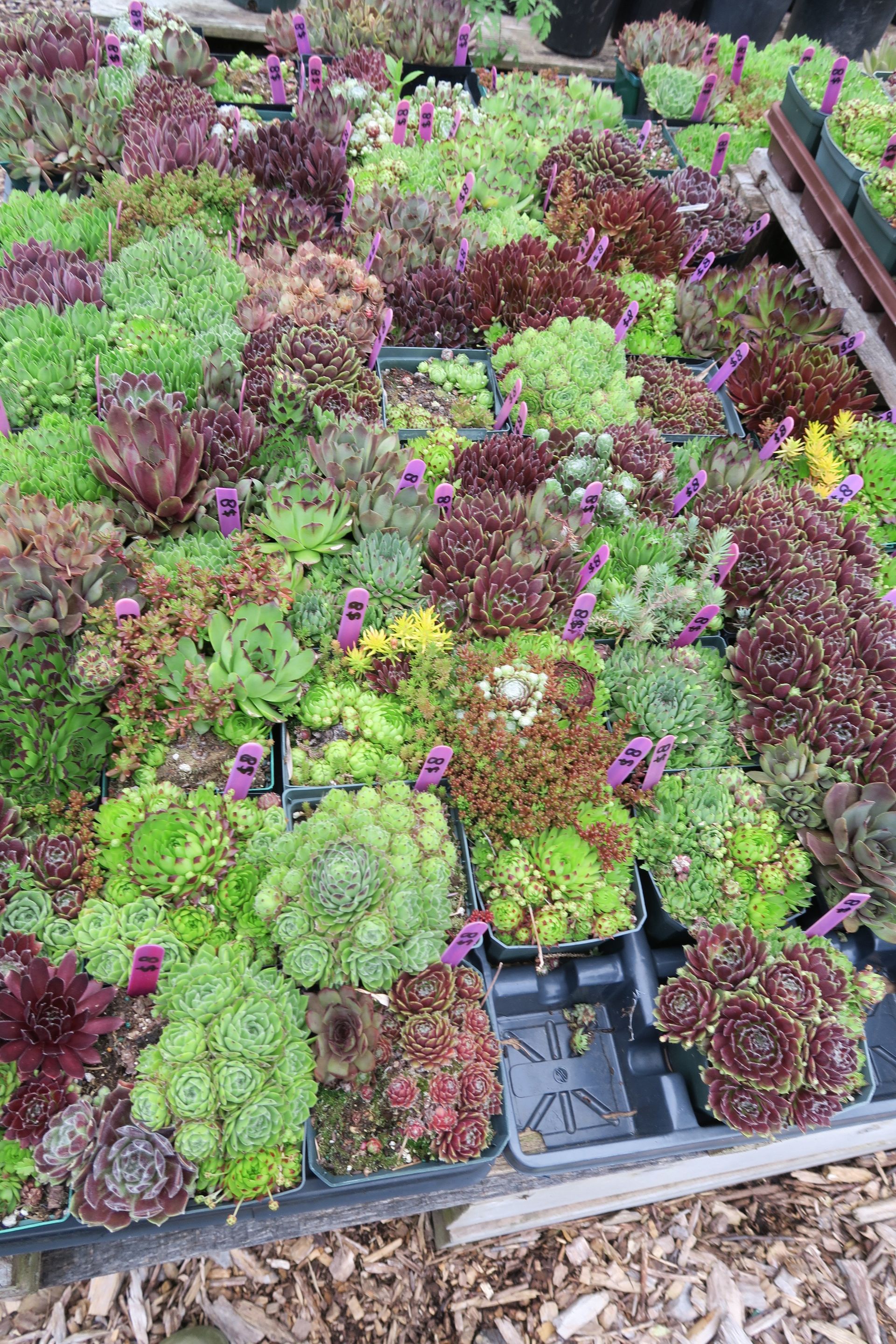
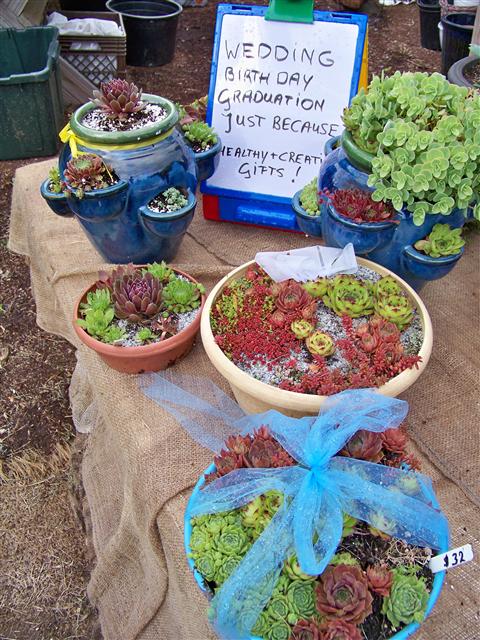
Succulents, such as sedum and sempervivum, offer exciting textures and colors with their thick foliage and delicate flowers. They are able to take heat, lots of sunlight, and little watering. Succulents are great to use is xeriscaping and rock gardening as well as in well-draining spots in a perennial border or container gardens.
Growing:
Perennial succulents require well-draining soils and very little water. The most important thing to consider when planting your containers (or if you're planting in the ground) is to provide excellent drainage. Without good drainage, they will rot.
They are also easy to propagate, have colorful flowers, and, although they spread rapidly, are not invasive. They prefer growing zones 4-8 and they need Full Sun to Part Sun.
Once a hen plant produces a chick, that chick will begin producing its own babies after only 1 season. Sempervivum plants generally only live for 3 years, so the plants have 2 productive years before they die. After 3 years and having produced many baby plants a Sempervivum grows a tall center stalk that blooms before the plant dies. Cutting off the center stalk will not prevent the plant from dying.
At times, you may want to move your containers to get them out of heavy rain.
Sempervivums will grow in a smaller amount of potting mix than most plants, so it is not necessary to use large containers.
Let the soil dry out between watering. These succulent plants are drought resistant since they store water in their leaves, but they still need water to thrive. During the summer heat they will need to be watered more frequently. Dont over water. If you see your plants begin to struggle, make sure the soil drainage is good and cut back on the watering. Most plants die because of overwatering!
Overwintering: Move the plants into an unheated garage or cover them during sever winter weather. Succulents need shelter from winter rain and melting snow. They can survive the cold well. For winter storage place the pot in direct contact with the ground to avoid fluctuating temperatures. Place a large pot over the container garden. Put a rock or brick on top. You can also use a crate covered with a piece of white plastic.
Insurance: If you have very favorite sedums or hens and chicks, put some chicks in the ground (make sure it is a spot that drains well) in late August, early September. They will nearly always survive there and you have your own supply if some don't survive in the pots.
Fun Facts: The Latin name Sedum means "to sit." It is an appropriate name for the low-growing succulents. They have evolved in some of the toughest growing conditions on earth and are actually at their best when grown in the hot sun and poor soil.
Sempervivum (Hens and Chicks) means "always alive" - a reference to the fact that houseleeks tolerate extreme temperatures and drought.
Sempervivum: These grow babies on runners. Just pull off the chicks and plant elsewhere. It is best to remove the babies when the runner has begun to wither. Offsets root quickly and contact with soil is enough for them to start growing.
Jovibarba Rollers: These types of Hens and Chicks produce lightly attached "chicks" that easily pop off and roll away from the mother plant.
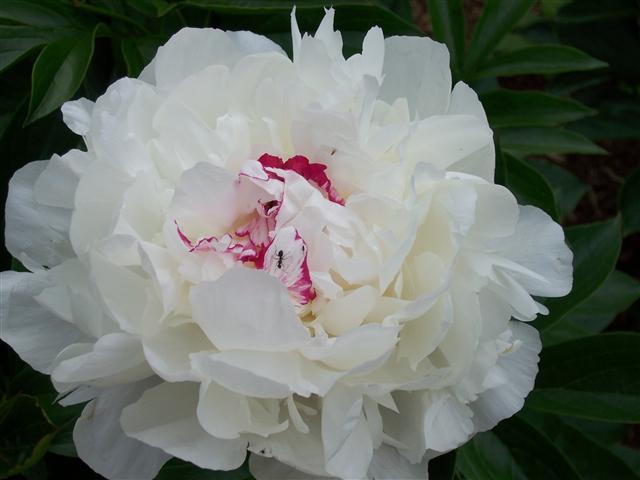
Marijke’s Favorite Perennial Native Plants that grow well in Vermont:
Sun:
Monkshood ( Aconitum napellus )
Anise Hyssop ( Agastache foeniculum )
Bluestar ( Amsonia )
Butterfly Weed ( Asclepsis tuberose )
Milkweed ( Asclepsis syriaca )
New England Aster ( Aster Dumosis now Symphyotrichum dumosum )
False Indigo ( Baptesia )
Tick seed ( Coreopsis )
Fernleaf Bleeding Heart ( Dicentra eximia )
Coneflower ( Echinacea )
Joe Pye Weed ( Eupatorium )
Queen of the Prairie ( Filipendula )
Blanket Flower ( Gaillardia )
Sneezeweed ( Helenium )
False Sunflower ( Heliopsis )
Blue flag Iris ( Iris prismatica )
Gay Feather ( Liatris )
Cardinal Flower ( Lobelia cardinalis )
Big blue Lobelia ( Lobelia siphilicata )
Blue Lupine ( Lupinus perennis )
Beebalm ( Monarda )
Evening primrose ( Oenothera )
Beard Tongue ( Penstemon )
Woodland Phlox ( Phlox divaricata )
Garden Phlox ( Phlox paniculata )
Obedient plant ( Physostegia )
Black-eyed Susans, Goldsturm, Herbst sonne, Henri Eilers ( Rudbeckia )
Goldenrod ( Solidago )
American Burnet ( Sanguisorba canadensis )
Cup flower ( Silphium perfoliatum )
New York ironweed ( Vernonia )
Part Shade:
Black Snakeroot, Fairy Candles( Actaea racemosa , formerly Cimicifuga )
Blue Star ( Amsonia )
Wild Columbine ( Aquilegia Canadensis )
Goats Beard ( Aruncus )
Wild Ginger ( Asarum canadense )
Joe Pye Weed ( Eupatorium )
Queen of the Prairie, Meadow sweet ( Filipendula )
Coral bells ( Heuchera )
Woodland Phlox ( Phlox divaricata )
Garden Phlox ( Phlox paniculata )
Obedient plant ( Physostegia )
Jacob’s ladder ( Polemonium )
False salomon’s seal ( Smilacina racemosa )
Meadow rue ( Thalictrum )
Foam Flower ( Tiarella )
Spiderwort ( Tradescantia )
Labrador violet ( Viola labradorica )
Shade:
Wild Ginger ( Asarum canadense )
Turtle head ( Chelone )
Coral bells (Heuchera)
Jacob’s ladder ( Polemonium )
Foam Flower ( Tiarella )
Wakerobin ( Trillium )
Labrador violet ( Viola labradorica )
Hardy Native Shrubs:
Service berry ( Amalanchier Canadensis )
Black chokeberry ( Aronia melonacarpa )
Beautyberry ( Callicarpa Americana )
Buttonbush ( Cephalanthus )
White Fringe Tree ( Chionanthus virginicus )
White Summersweet ( Clethra alnifolia )
Red Osier Dog wood ( Cornus sericea )
American Hazelnut ( Corylus americana )
Smooth Hydrangea ‘Annabelle’ and ‘Incrediball’ (H ydrangea arborescens )
Winterberry ( Ilex verticilata )
Beauty Bush ( Kolkwitzia amabilis )
Spice Bush ( Lindera benzoin )
Ninebark ( Physocarpus )
Clove currant ( Ribes odoratum )
Fragrant Sumac ( Rhus aromatica )
Elderberry ( Sambucus canadensis )
Blueberry Higbush ( Vaccinum )
Cranberry Highbush ( Viburnum trilobum )
Witherod ( Viburnum cassinoides )
Nannyberry ( Viburnum lentago )
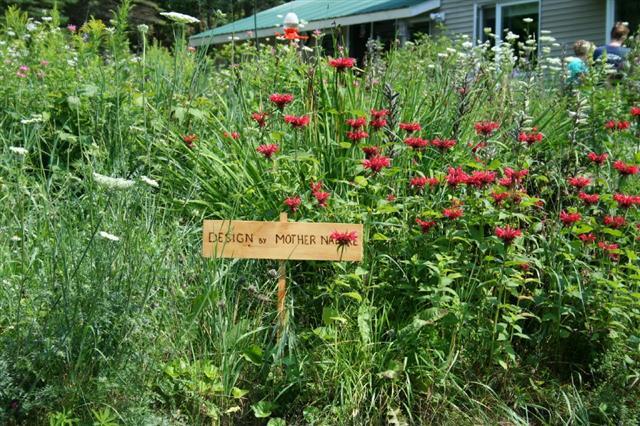
Why Native Plants?
- Once established, most native plants do not need watering beyond rain
- NO watering. No fertilizer. Little pruning
- Native plants have developed their own defenses against many pests and diseases. Many pesticides kill indiscriminately. Yes, organic pesticides kill bees and many other pollinators and beneficial insects. Natural pest control takes over. Native plants save our water, amphibians, and us.
- Native plants, birds, butterflies, beneficial insects, and interesting critters are “made for each other.” Watch the pollinators come to your gardens!
- No wasted gas for transportation. And if field-grown, no greenhouse heating
What are Native Plants?
Native plants are LOCAL. They are plants that have been growing in a particular habitat and regions for thousands of years or longer. They are well-adapted to the climate, light and soil conditions that characterize their ecosystem. They have build relationships with animals, birds, bugs, plants, fungi etc.
In general, they are plants that were growing in this country before the European colonies arrived.
What do non-native plants do wrong?
- Non-Native plant species have less nutrition for birds and bugs.
- They displace the native plants:
Let’s
look at the Sugar Maple, the beauty of
Vermont. It provides food in the form of nuts,
leaves, and wood for a variety of animals,
plants, and insects. (and Maple syrup
for an important animal species). The interaction
of all keep nature in balance.
When exotic species like the Norway maple (one
of the most sold trees) are
introduced, they upset this balance and become invasive.
They drive away the good trees and all of the benefits the tree has built up
over all those years. The same for the pretty burning bush and barberries and
so many others.
Multiply this with many plant species and we create a monster with foreign bugs (did I say Japanese beetle, lily beetle, ash borer, or spotted wing drosophila among many?)
We can all contribute by planting native plants to replace the invasive plants.
You will be rewarded! They attract native bird, butterflies and insects. As a bonus we will have great flowers, wonderful pollinators, and easy maintenance.
